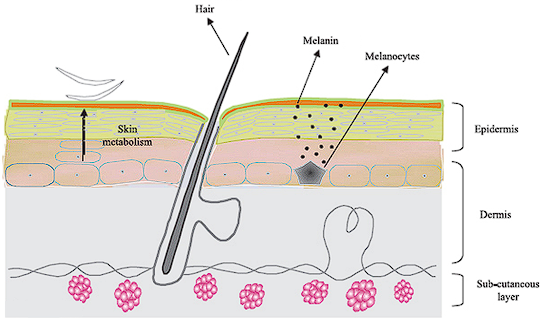The Role of Melanocytes in the Pathogenesis of Vitiligo

The melanocytes are a special kind of cells in the skin that produce melanin and pass it to the surrounding keratin-forming cells (cells that form most of the epidermal skin). Melanin stays in the nucleus of these keratin-forming cells to protect against damage to chromosomes from light radiation. In the normal human epidermis, one melanocyte can produce melanin for around 40 keratin-forming cells, which are called the melanogenic units of the epidermis. The color of the skin comes from the melanin stored in the keratin-forming cells. Generally speaking, people with more stored melanin have darker and more protected skin tones. However, studies have shown that there is no significant difference in the number of melanocytes in people of different races. A normal and healthy skin tone in the body is the result of balanced melanin synthesis and metabolism.
The pathogenesis of vitiligo is related to the massive loss of melanin in the skin. The amount of melanin not only determines the difference in human skin color but also is the key substance in the development of vitiligo.
The reason why the skin has pigment in it is because of the presence of melanocytes in the skin, which constitute and secrete melanin and are therefore a type of glandular cells. But the biological composition of melanin is very complex and is formed through the performance of tyrosine and tyrosinase within the chromophore (immature melanin). Any disorder in the synthesis, movement, and degradation of vitiligo melanin may affect its metabolism and affect skin color change. So melanocytes play a vital role in the pathogenesis of vitiligo.



Leave a Comment